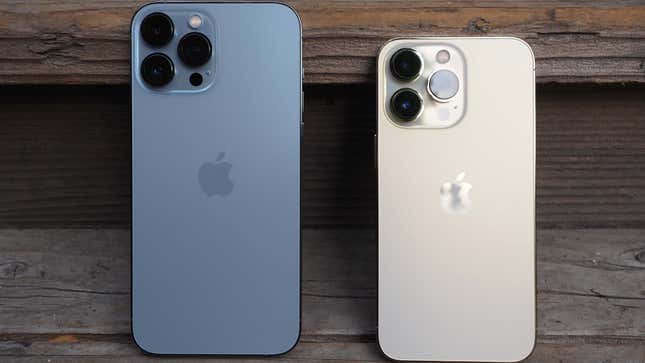
Apple’s self-service repair program went live today, giving DIYers the genuine parts and instructions needed to fix the iPhone 12, iPhone 13, and third-generation iPhone SE themselves. While an exciting development for Apple customers, there are some criticisms about the implementation.
The tools needed to repair these devices are only available in the US, but Apple will expand to other countries and eventually include Macs. As part of this program, the company launched a repair site where you can purchase OEM parts, such as a new battery, camera module, or SIM tray.
Even the basic tools needed to replace and install new parts, like screws, bits, and adhesive, can be purchased directly through the site, which is reportedly being operated by a third-party company. Or instead of buying them, Apple will make tool rental kits available for $49 for seven days of use. In a press release, Apple encouraged customers to review the repair manual for their specific device by visiting the Self Service Repair page before entering the digital store to order parts and tools.
So far, the online store has more than 200 parts and tools for the iPhone 12, iPhone 13, and iPhone SE lineups. Mac parts, manuals, and tools will be added later this year, at which point Apple laptops and desktops can also be serviced at home. Parts are sold at the same price as those available to Apple’s authorized repair shops, and returning certain recyclable components nets customers a credit.
The camera module for an iPhone 13 costs $111.75 outright, but drops to $59.25 after the return credit. Screen repairs are rather expensive at $269.95, though you save $33.60 when you return the old one. Other components don’t seem outrageously marked up: the bottom speaker is $38, a universal screw kit costs $3.30, and a nylon probe is $2.78. Then again, purchasing single parts, like one Torx security bit for $13.33, isn’t the most cost-effective option. It’s worth noting that Apple doesn’t list any specs for these parts.
When Apple announced its home repair service last year, it was seen as a major swing for a company notoriously hostile to independent repair shops to the point of us dubbing it one of right-to-repair’s most powerful villains. Apple had previously been criticized for steering customers away from doing DIY repairs or using independent repair shops, encouraging in-store repairs instead.
DIY repair specialists iFixit uncovered in 2019 a warning notification presented to iPhone users after an at-home repair. Beginning with iOS 13.1, iPhone 11 models showed “Unable to verify this iPhone has a genuine Apple display” as a persistent message on the lock screen for four days, after which the warning moves into Settings for 15 days and Settings > General thereafter. The message appeared even when iFixit used genuine parts—to avoid this message, you needed to take your device to a certified Apple technician.
The message can now be removed, but not without a catch. As iFixit notes, Apple is only enabling serial number-authorized repairs, meaning you can’t purchase parts without providing your serial number or IMEI. Moreover, once an installation is finished, you need to pair it with your phone using over-the-air configurator software. As a result, independent shops are crippled, unable to make a repair without the proper software.
“Integrating a serial number check into their checkout process is a dire omen and could allow Apple the power to block even more repairs in the future,” iFixit’s Elizabeth Chamberlain wrote. “Building the technology to provision individual repairs easily sets Apple up as the gateway to approve—or deny—any repairs in the future, with parts from any source.”
Though the execution isn’t ideal, Apple’s Self Service Repair program is still a win for right-to-repair advocates. It joins a flurry of recent initiatives from other tech giants, including Google, Valve, Motorola, and Samsung, all of which have pledged to sell spare parts so customers can make their own repairs at a lower cost and on their own time. These programs arrive after President Biden passed an executive order, calling on the FTC to draft new regulations limiting manufacturers from restricting independent repairs.
It’s a shame, then, that older models like the iPhone 11 aren’t included in the program, as these are the models most likely to be in need of repairs or battery replacements. Eyes are on Apple to see if phones like the iPhone 12 continue to get support through its repair program as new hardware comes out.